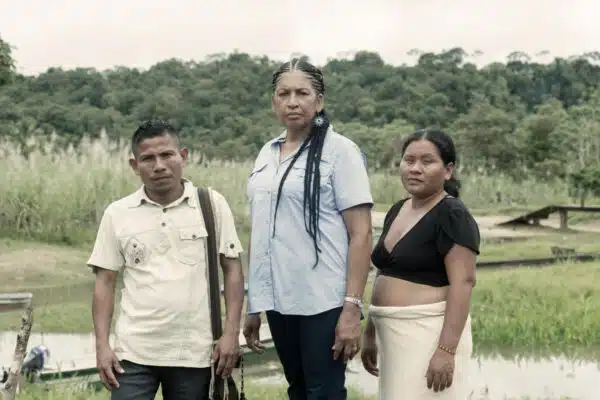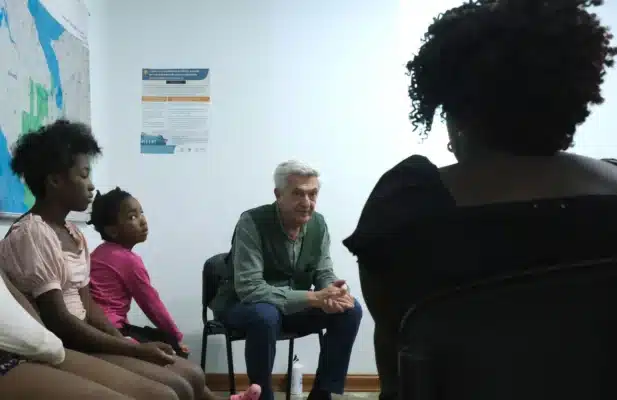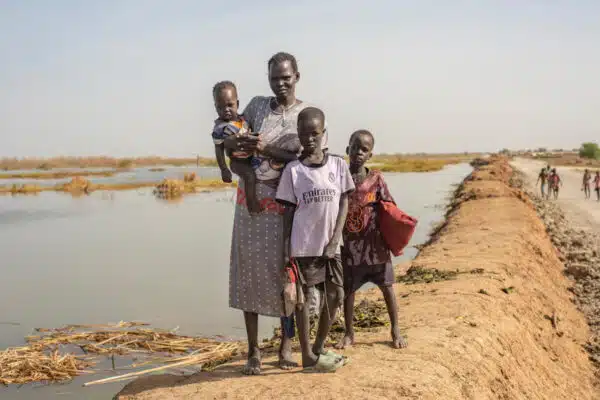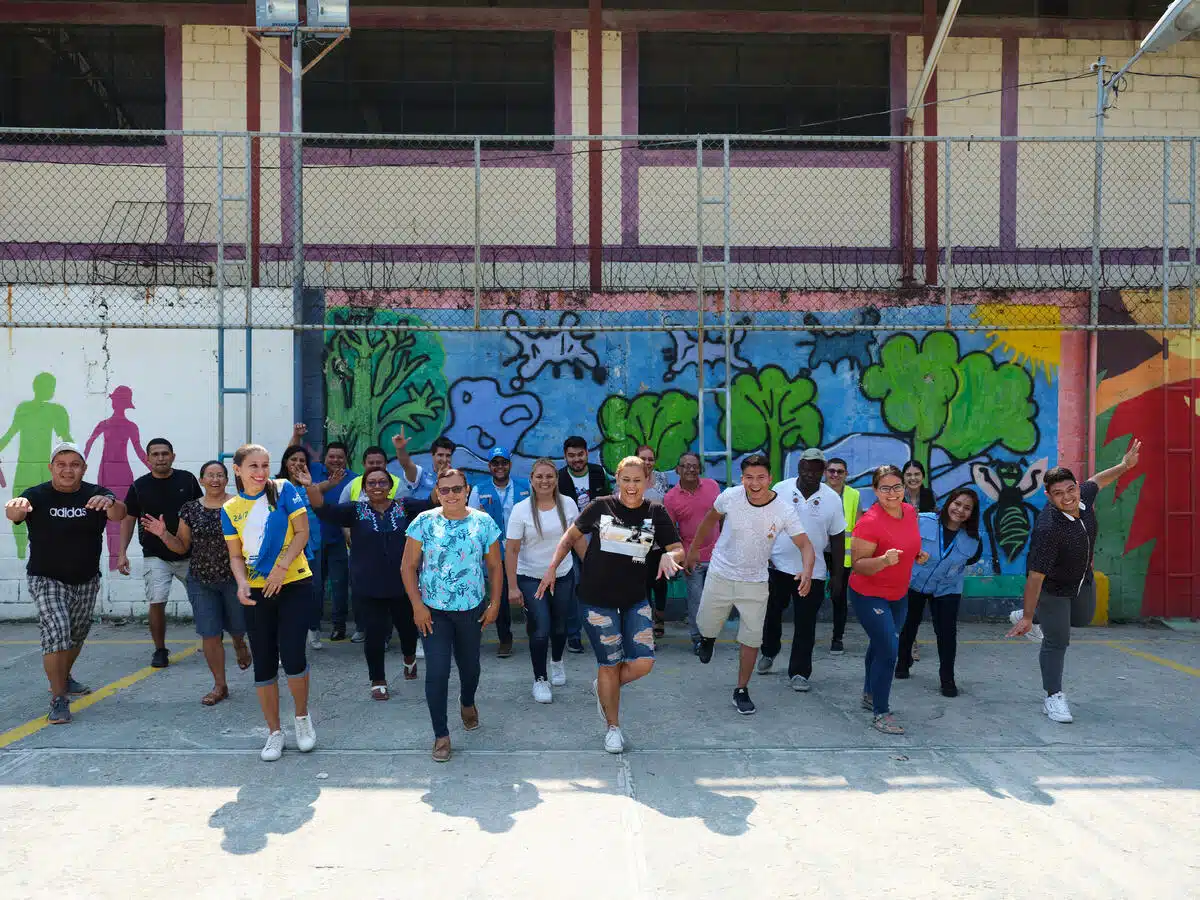
Community volunteers in Chamelecón have come together to prevent and respond to future disasters. © UNHCR/Santiago Escobar-Jaramillo
Three years after experiencing huge losses and displacement from Hurricanes Eta and Iota, a community near San Pedro Sula is determined to be ready for the next disaster
By Gabriela Villeda Castillo and José Romero Vásquez in San Pedro Sula, Honduras
After 40 years living in Chamelecón, a low-income community near the Honduran city of San Pedro Sula, Susana*, 65, was no stranger to calamity.
Hurricane Mitch forced her and her family to flee their home in 1998 and “start from scratch”. But she was not prepared for the devastation wrought by back-to-back hurricanes Eta and Iota.
“The water rose unbelievably in a matter of seconds,” she recalls about the night in November 2020 when Eta brought torrential rain that caused the nearby river to rise and flood much of the area. “It was chaos inside the whole neighbourhood, and all around Chamelecón. People running, people crying, people falling down.”
“We didn’t expect or believe that the neighbourhood would be flooded,” she adds. “A lot of us were caught off guard.”
“We didn’t expect or believe that the neighbourhood would be flooded.”
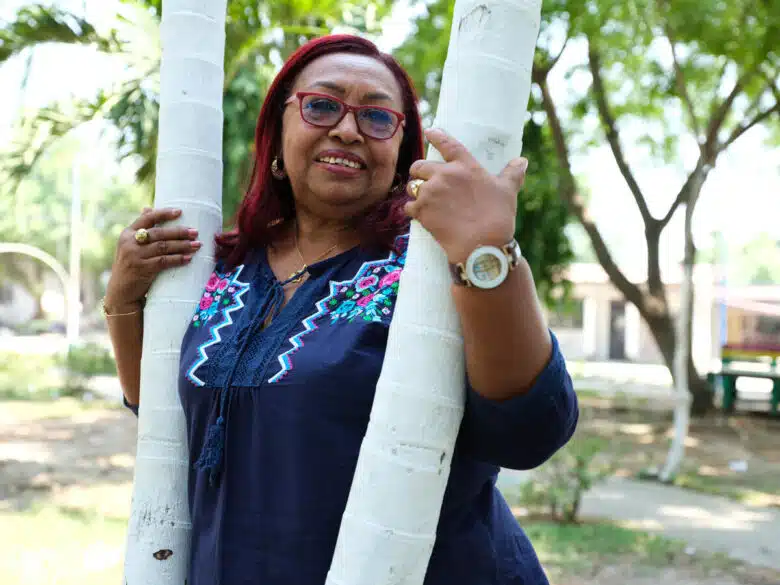
Susana* is now part of an Early Warning Committee that monitors water levels in the nearby river. © UNHCR/Santiago Escobar-Jaramillo
Susana fled her house with her son and her granddaughter, carrying only her purse and her documents.
They had returned to their house to start cleaning up when Iota arrived just 14 days later. “That was shocking,” she says. “There were people who hadn’t even finished taking down their things from the roof when they said that another hurricane was coming.”
Lasting impacts
Both hurricanes caused substantial damage, but the impact of Iota – the second and more severe of the two – was lasting.
“There are people who haven’t yet recovered from what happened,” says Rafael, a 57-year-old Afro-Indigenous community leader.
The streets of Chamelecón have long been controlled by criminal gangs who extort and threaten residents, pushing some to abandon their homes and search for safety.
“There are people who haven’t yet recovered from what happened.”
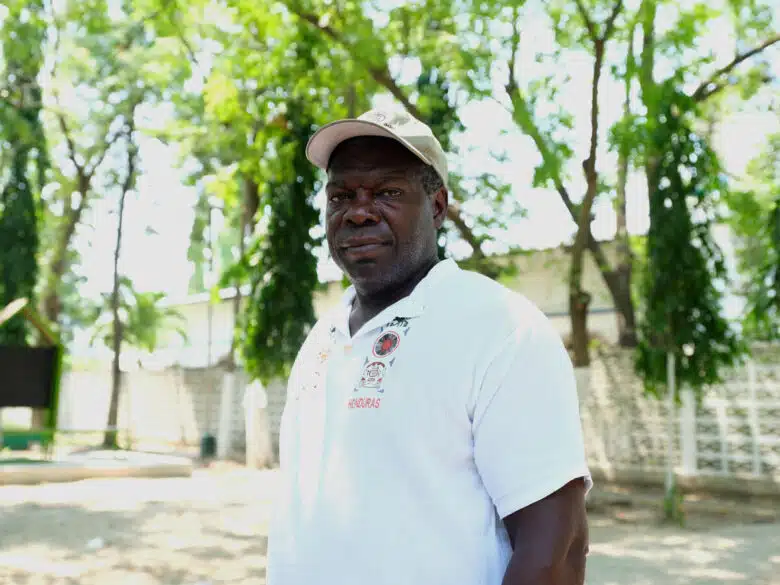
Community leader, Rafael, recalls that much of the neighbourhood was submerged in water after the 2020 hurricanes. © UNHCR/Santiago Escobar-Jaramillo
Across Honduras, acts of violence, threats and forced recruitment of young people have displaced more than 247,000 people since 2004.
In the wake of the hurricanes, life in the community became even more precarious and unsafe. The flooding had destroyed workplaces that sustained households, schools where children were preparing for a better future, and parks where people gathered for community activities. In addition, some community members returned to their homes to find they had been taken over by criminal groups.
Entire families were forcibly displaced to other parts of Honduras while some fled to other countries to rebuild their lives.
After the storms, residents realized that the safety and security situation would only worsen as climate change made such events more frequent and extreme. They resolved to get organized and start working together to prevent and respond to future disasters.
Planning for the next disaster
The UN Refugee Agency, UNHCR, and its partner Children International were already working with communities in San Pedro Sula to prevent displacement caused by violence. Following the hurricanes, both organizations recognized the heightened risks they were facing and supported Chamelecón and seven other communities near the city to work on action plans, should disaster strike again.
Residents began by working closely with the local government and the Honduran Red Cross to form several committees made up of local volunteers, each one focused on a different aspect of preventing and responding to a disaster. The Early Warning Committee, for example, which Susana is part of, monitors the river when there is heavy rain.
“We warn, ‘Look, the river is about to rise. If you can’t bring your things up to the roof, save your lives’,” she explains.
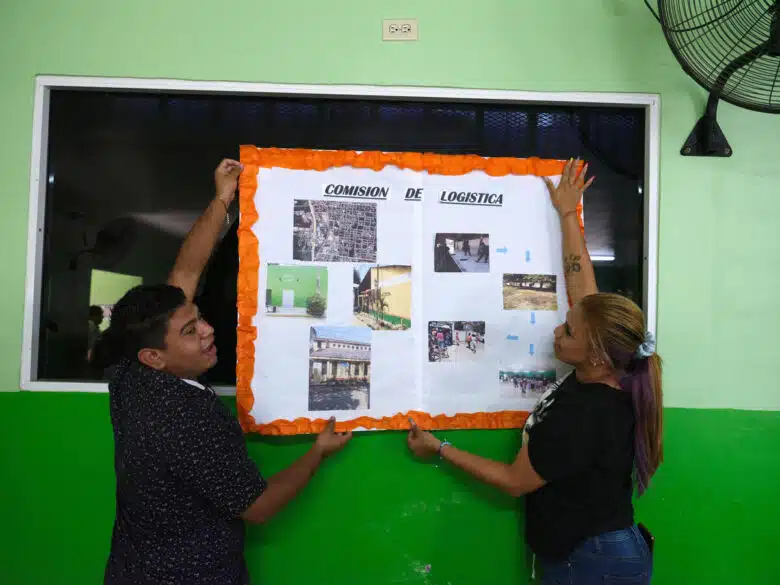
Volunteer members of the Logistics Committee have mapped safe spaces in the community that can serve as shelters. © UNHCR/Santiago Escobar-Jaramillo
Other committees are in charge of evacuation, first aid and logistics, which includes identifying and mapping safe spaces in the community that can serve as shelters.
“I remember when we started, we started from scratch,” says Dennis, 20, who belongs to the logistics committee. After receiving training from Children International, they now maintain a database which divides members of the community according to their needs. “When we have to give help, we have already prioritized the people who need it through the database. People are trained in what to do when the rains start.”
Collaborative approach yields results
Meanwhile, UNHCR has carried out work to rebuild and refurbish community spaces such as the park, the library and a community centre. Equipment for responding to a disaster, such as helmets and shovels, has also been distributed.
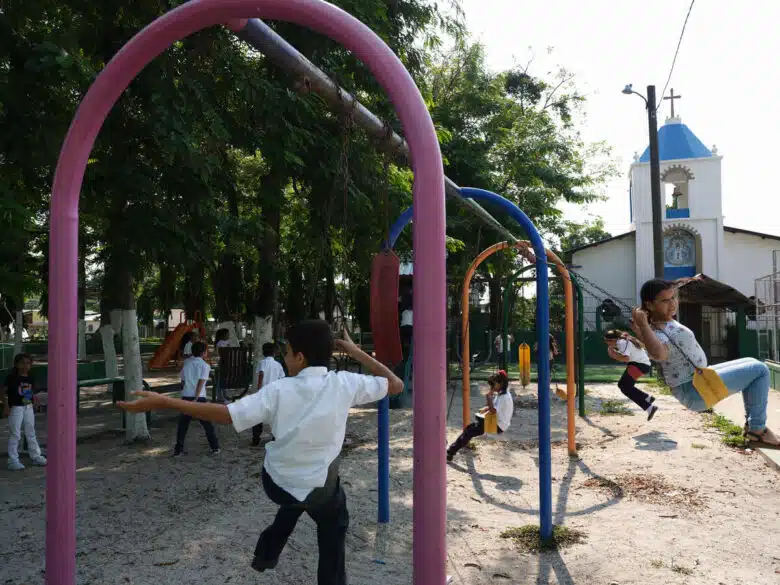
Children play at the park which is one of the community spaces that has been rebuilt by UNHCR since 2020. © UNHCR/Santiago Escobar-Jaramillo
When Hurricane Julia threatened to bring further destruction to the community in October 2022 “we already had an action plan strategy,” says Dennis. “The first thing we did was go to the communities to warn them; we already had the safe spaces; we already had the keys in advance.”
Fortunately, the storm dissipated, but “it tested us, and I think it was very satisfying,” says Dennis.
Although climate change continues to threaten communities like Chamelecón that are also impacted by violence, the residents’ collaborative approach and careful preparations are powerful tools against future challenges.
“Now the community is prepared,” says Rafael. “Each one of us works together so we’re ready to act before any disaster occurs.”
*Name changed for protection reasons
Originally published by UNHCR on 4 December 2023.



